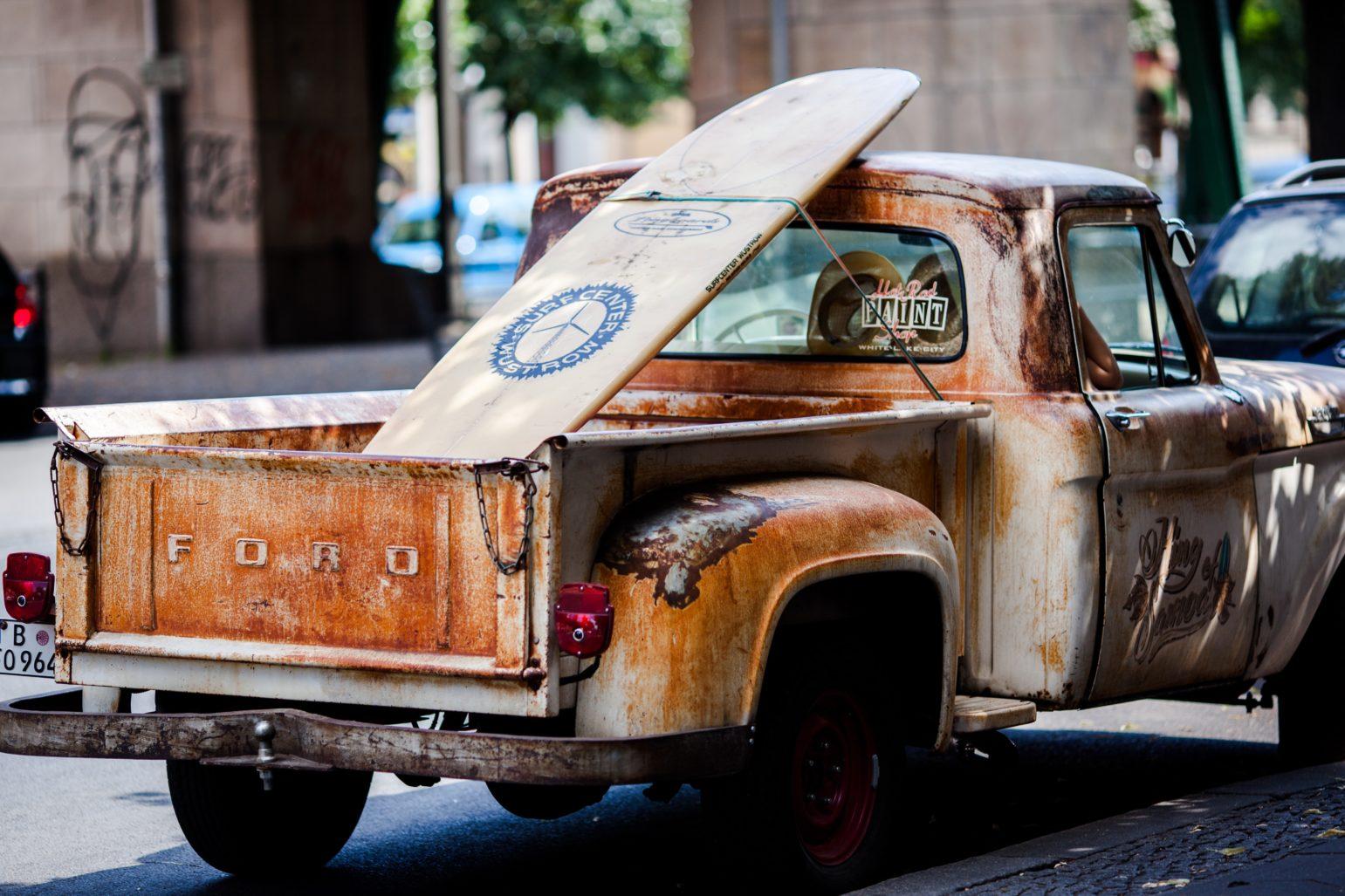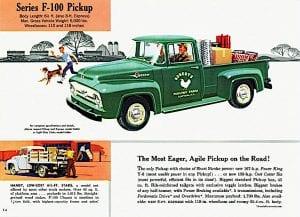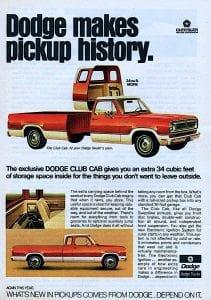The Best Half-Ton Pickup Truck of All Time

Contents
Introduction
Trucks aren’t about beauty. But there are beautiful trucks. Trucks aren’t about comfort. But a comfortable truck is a better truck. Trucks are about work. And a truck that can’t work isn’t much of a truck.
Evaluating the greatest used pickup of all time requires a clear-eyed evaluation of how well a truck can be used to get things done. All the other things that matter a little, only matter a little. Working matters a lot.
Finding the greatest half-ton pickup means ignoring big one-ton duallies, and even heavy-duty ¾-tonners. The half-ton pickups are trucks like the Ford F-150, Chevrolet Silverado, GMC Sierra, Ram 1500, Toyota Tundra, and Nissan Titan. Full-size trucks that are also used as everyday drivers and family haulers. They are the heart of the North American market.
The greatest used half-ton pickup truck of all time is beautiful, is comfortable, but most importantly, it works great. First, though, let’s understand why pickups rule North America.
America’s Truck Obsession
Dazzling urbanites that Americans are now, through most of our history we were simple farmers. Farmers spread out over an entire continent who relied upon horse-drawn wagons to move stuff around. These one- or two-horse buckboards were the backbone of America’s economy. In 1801, fully 95 percent of all Americans were farmers. And as the 20th century began, 35 percent of us were still farm folk.

While these were mostly small, family farms, they were relatively large by international standards. These weren’t small plots of land abutting a town, but often good-sized spreads hacked out of the wilderness, with anything resembling a population center miles away. Those wagons worked hard to keep the farm going, but were also the vital link for farm families with the rest of the world.
But even in cities it was horse-drawn wagons that kept them going. They delivered goods, moved people and kept enterprises alive. Horses dropping dead from work was a problem in places like New York and Detroit. And every street doubled as a river of, well, horse effluvia.
Pickup trucks arrived as direct replacements for the wagons that built the country. There are arguments about what company first introduced the pickup truck. Bare chassis that could be fitted with cabs and beds were available even before World War I. But the modern pickup as we know it – a cab with a factory made and factory installed steel bed behind it – is usually dated to the 1925 Ford Model T pickup. It wasn’t much more than a Model T runabout cab with a bed behind it, but it was definitely recognizable as a pickup truck.

America replaced all its working horse wagons with trucks of one sort or another so quickly that by the 1930s horse-drawn wagons were a rare sight even in rural states. Americans have never fallen out of love with trucks since then.
Travel across the United States, Mexico or Canada today, and it’s obvious that the half-ton pickup truck is the first tool literally millions of businesses acquire. In the NAFTA countries, pickups are the base for entrepreneurialism. And in large part, that’s where the vitality of the region’s economy is.
There have been loads of great trucks. The 1973 Dodge D100 Club Cab broke ground by adding some space behind the seat of the cab and extending usefulness to some families. The 1967 to 1972 GM pickups are cherished by collectors and truly rugged. The 2001 Ford F-150 SuperCrew was the first half-tonner available as a true crew cab and was so successful that today virtually all trucks sold at retail today are four-doors.
But the two greatest half-ton pickups ever are time-tested and still on the road. It’s this pair, one Ford and one GM product, that established the pickup truck as a reasonable and comfortable alternative to the passenger car without compromise utility. And even though they’ve both been out of production for more than 60 years. They’re still great used trucks and beasts of burden with years of work ahead of them.

Nominee One: 1947 to 1955 General Motors Advance Design
Pickups built before World War II were strictly utilitarian. They did the job, and that was about it. And the first pickups built after the war weren’t much more than the pre-war models rushed back into production. Then came the 1947 Advance Design pickups from General Motors. These Chevrolet and GMC pickups changed the game.
All-new in almost every sense, the Advance Design trucks used a new all-steel cab that was roomier and more stylish and comfortable than ever before. The cab was even available with wraparound rear quarter windows that improved visibility and looked sweet too. Under the skin there was a new frame that was beefier than before with a slightly longer, 116-inch wheelbase. The suspension system was still primitive – solid axles front and rear – but the ride was vastly improved without compromising utility.
Power for Chevrolet’s “Thriftmaster” Advance Design trucks initially came from a 90-horsepower, 3.5-liter OHV straight six. From carburetor to tail pipe, it was as ordinary as any engine in production. But given some maintenance, the Thriftmaster Six would last for decades. In fact some are still going to today, more than 70 years after these trucks were introduced, as regular work vehicles.
The Advance Design trucks elevated the work vehicle in America to a new level of usefulness. And it’s looks were so iconic that in 2003, Chevrolet itself built upon that bull nose design heritage when it introduced the SSR roadster truck. And then in 2006 it did it again with the HHR small sport utility vehicle.
General Motors sold millions of these trucks over its nine years in production. And today they’re not quite collectors’ items. They’re getting there, however. They are trucks that have supported generations of Americans.

Nominee Two: 1953 to 1956 Ford F-100
Technically the Ford F-Series was launched with the 1948 pickup trucks. But that truck was still too similar to pre-war designs — an update, not something wholly new. Ford, though, hit its strike with the 1953 F-100, the second generation of the F-Series. And in 1956 it peaked.
Like the GM Advance Design pickups, the great feature of this generation Ford pickup was a cab that was both beautiful and roomy. The styling was modern with fenders that flowed elegantly up to the hood which in turn transitioned elegantly to the greenhouse. The wheelbase was a short 110-inches, making it more maneuverable than previous Ford pickups, while retaining a good ride. “Good” being a relative term at a time when solid axles and leaf springs were the suspension system.
What the F-100 had that the GM Advance Design trucks didn’t was an available V-8 engine. The 3.9-liter “Rogue” flathead V8 was only rated at 106-horsepower, but it delivered solid torque production that mated well with the optional Fordomatic automatic transmission. It was a wholly civilized truck in a world that had never before imagined a truck could be civilized at all.
While the 1953, 1954 and 1955 editions of this truck were fine, the 1956 edition was utterly brilliant looking. Taking the same basic body, Ford tweaked it with a true wraparound windshield for 1956 that made the whole thing look perfect. If you purchased the Custom Cab package, along came Ford’s first chrome grille since 1938.
Today the most desired option on a ’56 Ford F-100 is the available full wraparound rear window that turned the cab into a virtual fish bowl. It vastly improved visibility both during regular driving and when backing. And yes, it was great looking too.

And the Winner Is
For one year only, Ford produced a truck of great ability and absolute beauty. While plenty of them have been converted in recent years into hot rods, there are still hundreds out there working hard for their livings. Every other pickup since that ’56 Ford has been chasing the standard it set.
Want a ’56 Ford F-100 today? It won’t be cheap. But that’s only because they’re worth it.
Photos courtesy of Chevrolet, Dodge, Ford, and Wikimedia Commons



